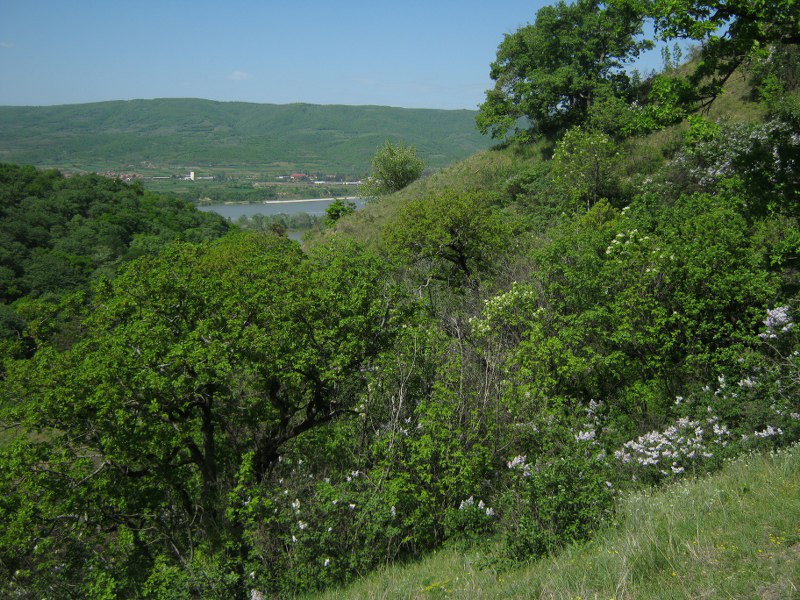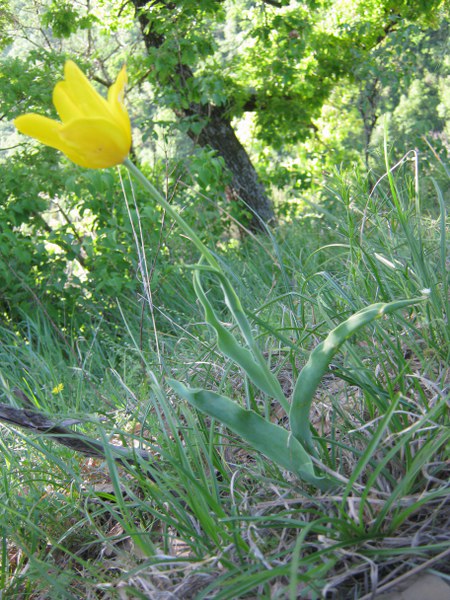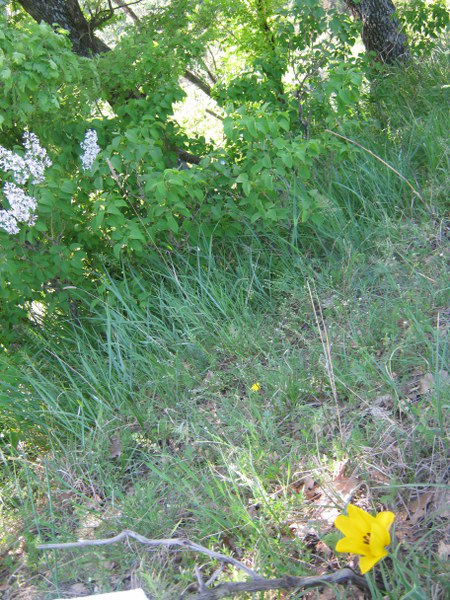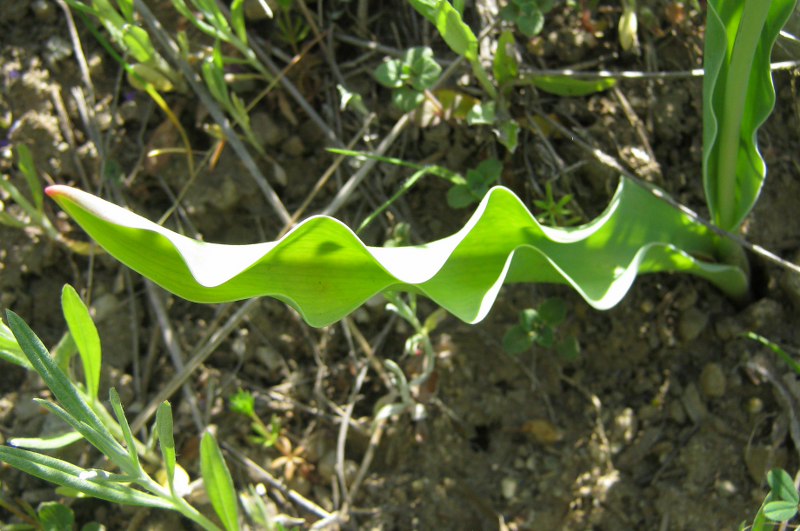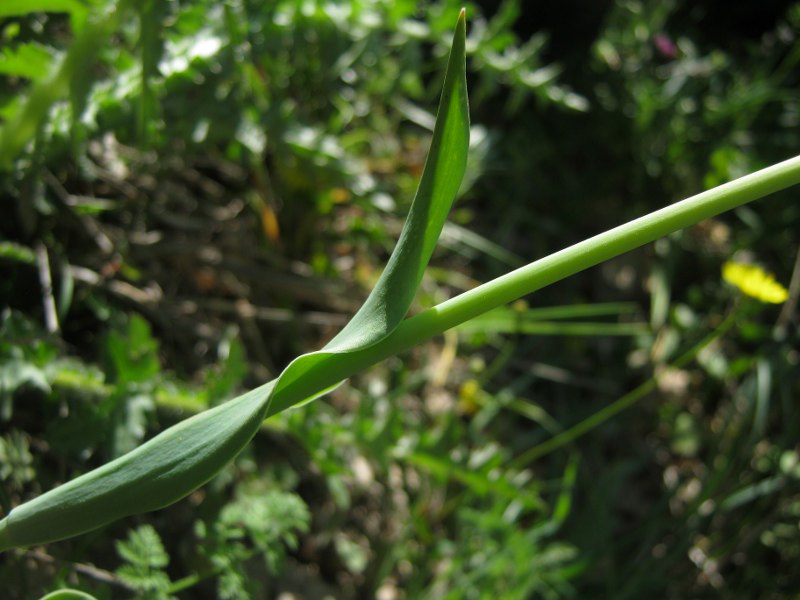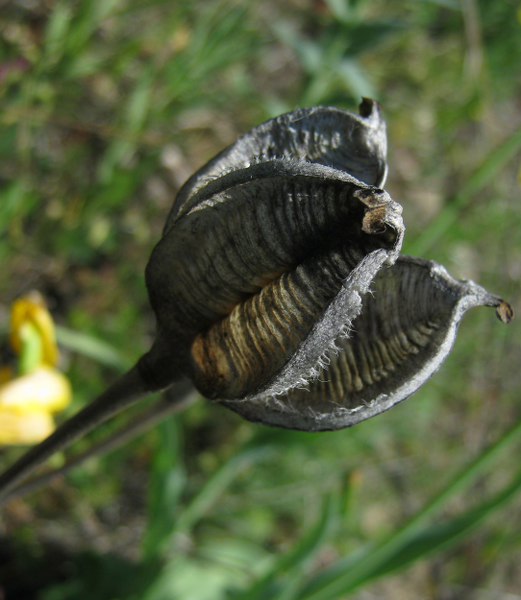home flora of romania endangered species of transylvania endangered habitats of transylvania
Tulipa hungarica Borbas ssp. undulatifolia (Roman) Roman et Beldie
|
This taxon has a very controversial taxonomy. However its close relationship with Tulipa hungarica cannot be overlooked. Most probably they are the same species.The population from the steep sunny right slope of Oglanic Valley near Gura Vaii, Mehedinti county, described by Nicolae Roman (1974) is very controversial in Romanian botany. It is considered as a distinct species, subspecies or merely a variety, In Ciocarlan (2009) it was considered Tulipa urumoffi Hayek (a Bulgarian species) a taxon which is considered by many authors a synonym of Tulipa hungarica Borbas (see here). Provisionally as in Sarbu, Stefan and Oprea (2013) we consider here this taxon as a subspecies. The main distinctive characters invoked are: 1. the undulate margin of the leaves - this is a character which cannot count taxonomically despite it is directly involved in the name of the taxon. It commonly occurs in any Tulipa from subgenus Tulipa s.str. in dry conditions. You can see this even with cultivated varieties in the same patch - the ones which benefit of shade have no undulated leaves, the ones which grow more or less under direct sun have clear undulate leaf margins (see the last photograph at the bottom of this page). Even in the population from Oglanic valley you can clearly see the same effect - the individuals growing in the shade of Syringa vulgaris shrubs have no undulate margins along their leaves. 2. the black anthers - as you can see in the photographs below most of the individuals have dark violet anthers and pollen but at least some have also yellow pollen. In Tulipa hungarica half of the individuals have yellow pollen and anthers while in the other half they are dark violet. 3. the black dots at the base of the tepals - this character mentioned in numerous Romanian flora books simply does not exist, the tepals are everytime plain yellow without any spots. 4. flowers are sometimes red (Ciocarlan, 2009 p. 901) - this never happens, 5. flowers are fragrant - this is a very variable character across Tulipa s.str. and needs further investigations. What eventually remain are morphometry and genetics. The plants from Oglanic valley are clearly smaller in all respects when compared to Tulipa hungarica but this can be merely a habitat effect like the undulated margin of the leaves. One can clearly see that Tulipa hungarica in Cazanele Mari area grows in more or less shaded habitats above the water while undulatifolia grows in much xeric conditions. Gura Vaii, Mehedinti county in Iron Gates Natural Park area, Mehedinti Tableland on the steep right sunny slope of Oglanic Valley, 25th of April. 2013. dr. Alexandru Badarau, alexandru@transsilvanica.net
In the photograph below to the left student (2013) in Environmental Science Maria Tomuza who did her graduation thesis on Tulipa hungarica ssp. undulatifolia and to the right our so valuable help in the area, heartful Amalia Dumbrava, the biologist of Iron Gates Natural Park.
Gura Vaii, Mehedinti county in Iron Gates Natural Park area, Mehedinti Tableland on the steep right sunny slope of Oglanic Valley, 10th of April. 2011. dr. Bartha Laszlo, bartha19@yahoo.com
In the following two photographs below there is our colleague dr. Sramko Gabor from Unoiversity of Debrecen
In the photographs below there are two individuals from a cultivar photographed on 29th of March 2014 somewhere near a block of flats in str. Hameiului 6, Cluj-Napoca, Cluj county. They grow for most of the day in direct sun light so they present the xeromorphic effect of undulated leaf margins. A few meters away the cultivars which grow in the shade have always plain leaves. dr. Alexandru Badarau, alexandru@transsilvanica.net
|

